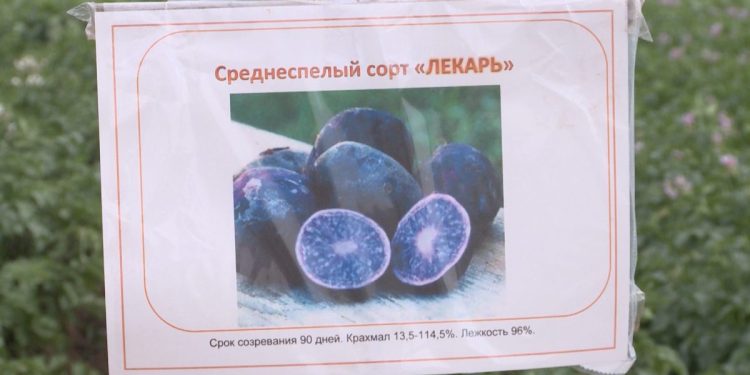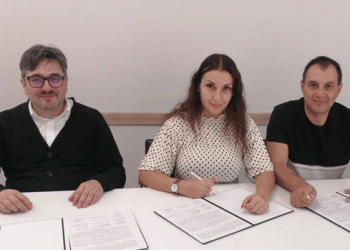It is adapted to the Volgograd climate, contains more useful substances, and most importantly – the root crop is not the usual white color, but can be red, pink and even purple. Work on the adaptation of potatoes began this year and our scientists have already received results.
In the Volgograd region may appear its own variety of potatoes
This is not the fruit of genetic engineering, but only the result of crossing traditional potato varieties with its South American relative. Previously, an unusual root crop was not grown in the Volgograd region. It is not familiar to the mass consumer. At the same time, you should not be afraid of it – the bright color of the pulp, scientists say, indicates a high content of nutrients.
- It contains a large percentage of anthocyanins, which we are used to seeing in leaves, on the stem, in flowers. Here it is important to obtain these pigments in the tuber. These potatoes have flesh either purple or blue or red, raspberry. The increased content of anthocyanin allows you to normalize the processes in the body, – explains Olga Gichenkova, senior researcher at the department of irrigation reclamation of the VNIIOZ.
Experts emphasize that those same anthocyanins are extremely useful for humans. In addition, purple potatoes have a lot of calcium, potassium, starch, as well as vitamins A, B, C, E. The substances that make up the composition reduce the risk of chronic inflammation, have an antibacterial effect, improve the functioning of the cardiovascular system, digestion, and high content of antioxidants slows down the aging process. The product is perfect for people with diabetes. But it’s almost impossible to find a bright vegetable on the shelves today. Everything can change in the near future.
“Firstly, we need to test these varieties here, see how they behave. Secondly, we must work out the entire technological complex for them, and, thirdly, we must also present them to the consumer in such a way that they can really stop their choice on them, – says Olga Gichenkova.
Healer, Elixir, Gourmet, Northern Lights, Lyubava and two more hybrids. This year, seven varieties of domestic selection were planted on the experimental fields. To make their mass production profitable, scientists will have to develop a clear agricultural technology. For vegetable growers, this is a kind of guarantee.
Great prospects today for soybeans. The global demand for this product is growing from year to year, and the area under crops is constantly increasing. Success awaits growers who offer the best combination of early maturity and yield.
- From sowing to ripening, early-ripening varieties take 90 days, for later ones – up to 120 days. The yield of early maturing varieties is 2.5 tons, and for late varieties – up to 4 tons, – says Vladimir Tolokonnikov, head of the laboratory of breeding and seed production of the Federal State Budgetary Institution “VNIIOZ”.
In the experimental fields of the Institute of Irrigation, important characteristics of soybeans are constantly being improved. A number of varieties have already become the basis for producers. But the search for the best indicators continues. High-protein soybeans are of particular interest on the market today – the institute pays special attention to the selection of these varieties.
“The surcharge is high for such grain, so we are strengthening the selection of high-protein varieties so that they meet the functional requirements,” says Vladimir Tolokonnikov.
— In the future, two varieties will be transferred to the State Variety Commission, and until 2026, a study will be carried out to develop four more new varieties. Their peculiarity is such that it is necessary to obtain the most productive variety, responsive to irrigation and with a high level of protein. Our task now is to obtain a protein level of 40-45% or more in order to reach international standards, – explains Andrey Novikov, director of the VNIIOZ.
Scientists have no doubt that the ideal combination will be achieved. Despite the difficult climatic conditions of the Volgograd region, many varieties have every chance to take root. The testing cycle takes three years.
— On an atomic absorption analyzer, we determine heavy metals. Before and after sowing, the soil is brought to us for analysis, and we monitor it,” says Aliya Doshtambaeva, head of the soil, feed and food testing laboratory of the VNIIOZ.
- We identify those varieties that are most responsive to irrigation conditions in our area, which withstand these climatic conditions, and then we recommend them for production. As for the ware potatoes. Also, for a long time, the Institute was engaged in the production of seeds and provided the Lower Volga region with potato seed material, – says Alexei Novikov, Deputy Director of the FGBNU “VNIIOZ” for scientific work.
This year, the All-Russian Research Institute of Irrigated Agriculture turns 50 years old. Over decades of work, scientists have proven that even in a dry climate, high yields can be obtained from crops that are not typical for this territory. And in the near future there will be more resistant varieties.








